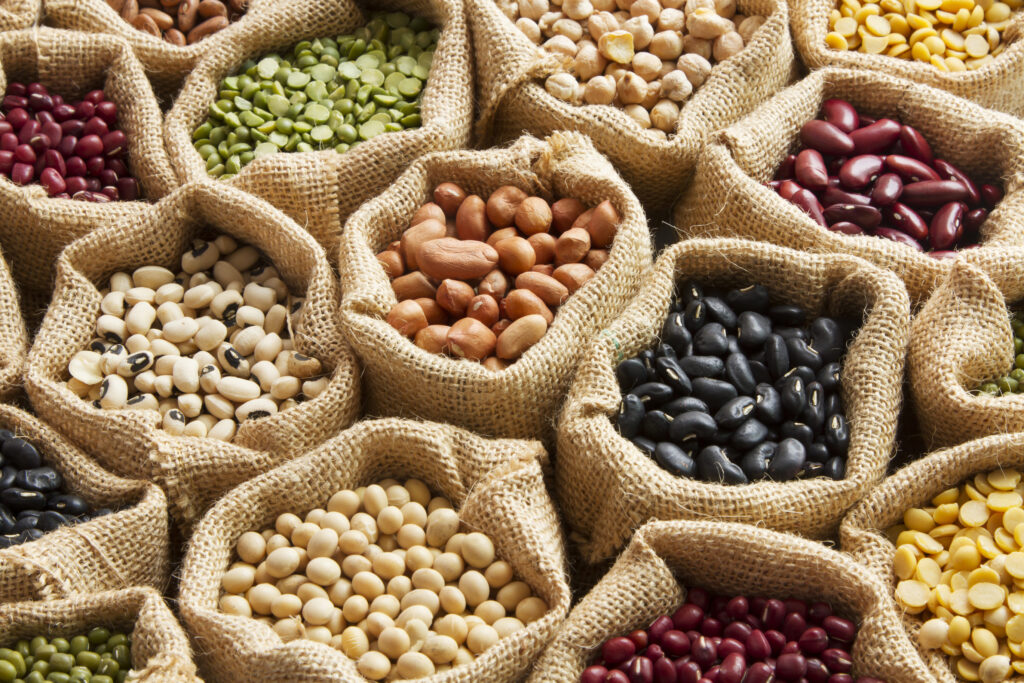
You’ve probably looked through recipes or watched a food program, and the word legumes is used. But when you see the legumes, you think, “those are just beans.” Cue the head-scratching.
You’re not wrong! But it’s also not quite so straightforward.
There is often a lot of confusion about the difference between beans and legumes. Some people think they are two completely different things. Others believe “beans” and “legumes” are interchangeable. Even some professional chefs mix up the two words, which only leads to more confusion.
Let’s clear up the difference between beans and legumes so you can learn to cook with and eat both confidently.
What are the differences between beans and legumes?
As it turns out, there aren’t really “differences” between the two. That’s because beans are a specific type of food that fits into the broader category of legumes.
The technical definitions are:
• Legumes – plants that bear fruit that grows in pods.
• Beans – the seeds from some varieties of legume plants, although generally, the whole plant is referred to as a bean plant.
Let’s break this down with an analogy. Think of legumes as birds and beans as peacocks. A peacock is a bird, but other birds aren’t necessarily peacocks. Others might be penguins (lentils), sparrows (peas), or herons (peanuts).
In other words: all beans are legumes, but all legumes aren’t necessarily beans.
This explains, for instance, why green beans aren’t actually beans in the technical sense. Because the fruit of the green bean plant is in a pod, green beans are actually just legumes, not beans. Someone needs to tell the person who named green beans that they’ve only contributed to even more confusion and misunderstanding!
If you want to get really technical, there’s another food group in this hierarchy that most people overlook.
Under the umbrella of legumes, you have some of the traditional legumes we mentioned—think soybeans and peanuts—and a separate category of pulses. The word pulse comes from the Latin word puls, which means thick soup. Pulses include lentils, chickpeas, peas, and beans. So, technically, beans fit into a larger category of pulses, which in turn fits into a larger category of legumes.

Courtesy of USAPulses
Let’s discuss whether beans are fruits or vegetables.
You’d probably answer “vegetables” if asked where beans fall in the fruit versus vegetable battle. We tend to think of classic fruits such as apples, oranges, and peaches when we think of fruits, which makes the savory, vitamin-packed bean a closer fit for our concept of what a vegetable should be.
However, since legumes are plants that bear their fruit in pods, and those fruits are what end up cooked and seasoned on your dinner table, you might also answer that beans are fruits.
This is true. But by at least one scientific definition, they are also vegetables.
Wait, what?
If you’ve lived your whole life thinking fruits and vegetables are two separate categories of edible plants, you may be in for a shock to discover that many botanical experts consider vegetables to be any edible part of a plant. This could include the leaves, flowers, roots, tubers, stalks, and even fruits of a plant.
By this broad definition, even snacking on a handful of strawberries would count as getting a serving of vegetables for the day.
Many people stray from that original definition, however, and consider vegetables to encompass mainly the roots, stems, or leaves of a plant while fruits cover the parts of a plant that contain seeds. By that definition, beans are fruits, but not vegetables.
Examples of legumes:
The fruits of legume plants you may have heard of include lentils, peas, and peanuts. Some other common legumes that you may have never considered are asparagus beans, soybeans, black-eyed peas, and sugar snap peas.
Learn to cook well with different kinds of legumes, and you’ll never run out of ideas for healthy, delicious, filling meals full of fiber and protein!
Examples of beans:
Under the broader category of legumes, we have several different categories of beans, including black beans, kidney beans, pinto beans, etc.
Fun fact: There are more than 40,000 different types of beans! But you won’t find most of them on grocery store shelves.
If you’d like to cook some delicious recipes with healthy, creamy beans, our online shop is full of wonderful choices. Pick up some Randall Great Northern Beans—also sold in a 4-pack, with shipping included in the price!—or some Randall Pinto Beans for classic examples. If you want to broaden your horizons, try the Randall Deluxe Bean Mix or the Randall Ultimate 4-Bean Mix to keep your taste buds excited.
Which is better for a healthy diet, beans or legumes?
It’s difficult to answer this commonly asked question because beans are legumes. People probably ask this because they are more familiar with bean recipes and less familiar with legume recipes.
We’d encourage you to experiment with all types of different legumes! Since they are from the same family, beans and other legumes have many of the same proven healthy qualities.
(Since we’re a company that sells exclusively beans, does that answer surprise you? It shouldn’t! We at Randall Beans pride ourselves on having our customers’ best interests at heart when it comes to great, healthy foods.)
Legumes and beans are both recommended by the American Diabetes Association, the American Heart Association, and the American Cancer Society as heart-healthy foods that can help prevent disease when consumed over time as part of an overall healthy diet.
They have low glycemic loads, which means they do not digest and turn into sugars quickly, such as with many other forms of carbohydrates. Instead, they digest slowly due to the high fiber and protein content. This means diabetics can usually eat beans and legumes safely without worrying about blood sugar spikes.
Beans and legumes are also great for weight-control diets. That same protein and fiber combo that makes these foods great for your blood sugar also keeps you full for longer after a meal. Put beans and legumes in your meals to stay full for hours and avoid the temptation to snack!
Beans and legumes contain plenty of vitamins and minerals that will help keep your body healthy. Just one cup of cooked legumes—beans included, of course—has a higher potassium content than a full banana, without all the blood-sugar-spiking fructose. They also have a variety of antioxidants and contain a hefty amount of calcium and iron!
You never know when you might find the perfect recipe that uses beans for an amazing, protein-packed treat. A good example is this cheesy mac and cheese with bacon and Randall Great Northern Beans.
Feeling inspired to try a delicious new bean recipe?
Randall Beans products are fully cooked and safely packaged in a glass jar, which keeps them fresh and more delicious for much longer than brands that are packaged in cans.
Check your local grocery store for Randall Beans, or keep your shopping quick and convenient by buying from our online store. Fresh, delicious, and conveniently pre-cooked beans will be delivered straight to you in no time!

